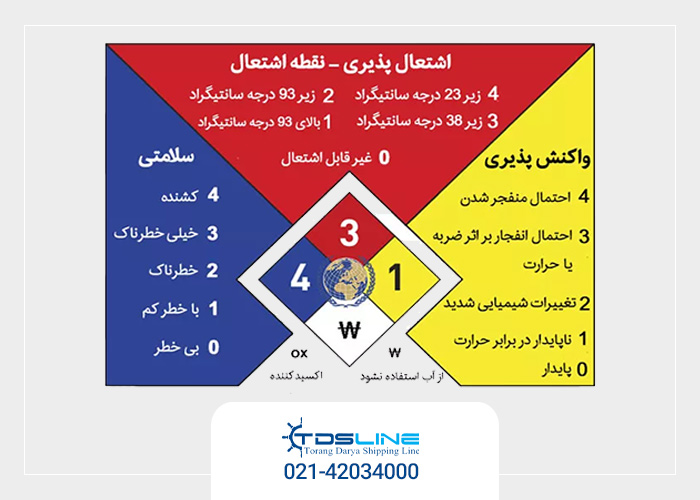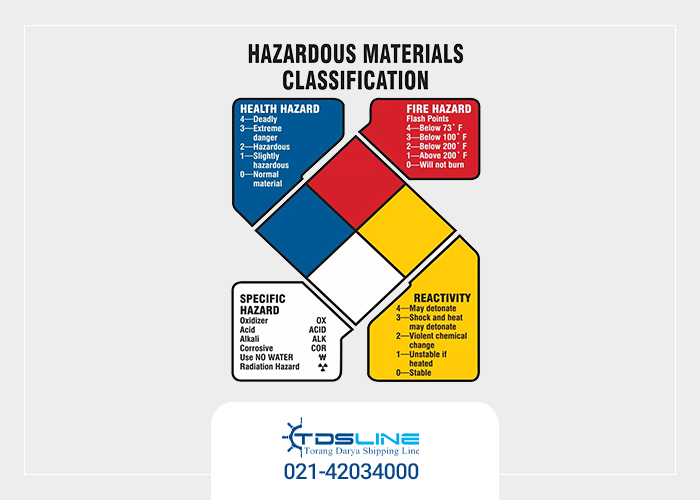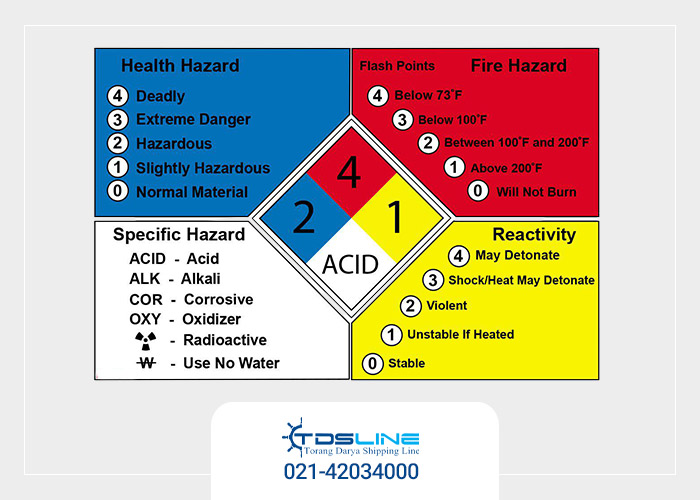Familiarity with Hazardous Chemical Transportation and MSDS
The Material Safety Data Sheet (MSDS) is created to provide complete information about the transportation, storage, and safety of chemicals, ensuring that the characteristics of each hazardous chemical are fully available to users.
Chemicals can be harmless, slightly hazardous, or extremely dangerous. Each chemical substance has specific properties and characteristics depending on its structure. For example, some chemicals are flammable.
Being aware of these properties is essential for working with, storing, and transporting them. In the following, you will learn more about MSDS and its different sections.

What is MSDS?
Learning how to handle and transport hazardous chemicals is essential because even the slightest mistake can lead to fires, explosions, environmental pollution, and many other deadly and dangerous incidents. The Material Safety Data Sheet (MSDS) for each hazardous chemical separately lists critical and necessary points for working with the substance, its transportation, storage methods, and safety precautions.

The Importance of Safety Information in MSDS for Hazardous Chemicals
MSDS is a mandatory requirement for using or handling hazardous chemicals. Be aware that if you are exposed to any hazardous chemical without proper knowledge, it can pose serious risks—from developing various cancers to infertility, vision loss, or infectious skin allergies. Therefore, before working with any hazardous chemical, study its safety information.


For information on shipping costs for hazardous chemicals, you can easily contact the experts at Torang Darya Shipping Company to receive the best rates for transporting hazardous materials.
021-42034000
Different Sections of MSDS for Hazardous Chemicals
When you open MSDS form, you will encounter various headings, each related to a specific task or activity. This includes details such as the storage temperature of hazardous chemicals, transportation methods, or even the most significant risks associated with each chemical.
سوالات متداول
The key difference is that the MSDS (Material Safety Data Sheet) provides
comprehensive details about hazardous chemicals, including handling, storage, emergency measures, and toxicity, while hazard labels** only display basic information** such as:
- Chemical name
- Manufacturer details
- Hazard symbols
- Proper/improper uses
- Emergency contact numbers
Working with or transporting hazardous chemicals without proper knowledge can lead to irreversible damage. If you're unaware of a chemical's specific risks or don't know how to respond to emergencies, the chance of accidents increases significantly. Experts strongly recommend reviewing the MSDS before handling any hazardous chemical to ensure safety and compliance.
MSDS = Material Safety Data Sheet
It is a detailed document outlining the properties, hazards, and safety measures for handling hazardous chemicals.
Conclusion: Safety First When Handling Hazardous Chemicals
Working with and transporting hazardous chemicals requires strict adherence to safety protocols and regulations—ignoring them can lead to severe consequences including accidents, health risks, and legal penalties.
- The Material Safety Data Sheet (MSDS)is your primary safety guide when dealing with hazardous chemicals.
- It provides detailed instructions on safe handling, storage, transportation, and emergency response.
- By studying the MSDS, you gain full awareness of the chemical’s hazards and necessary precautions.
Need to Transport Hazardous Chemicals Safely?
If you require professional and compliant shipping of hazardous materials, consult the experts at:Torang Darya Shipping Company
Specialized in safe and regulated transport of hazardous chemicalsAlways prioritize safety—review the MSDS and follow industry best practices!
Conclusion
Working with hazardous chemicals and transporting dangerous goods has principles and regulations that can be very costly to you if you ignore them. One of the first steps in dealing with chemical products and dangerous goods is to study the MSDS safety form. In the MSDS form for hazardous chemicals, you will be familiar with the most important and detailed transportation, health, and safety points related to hazardous chemicals and you will fully understand that hazardous chemical.








